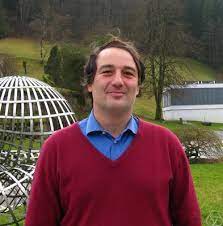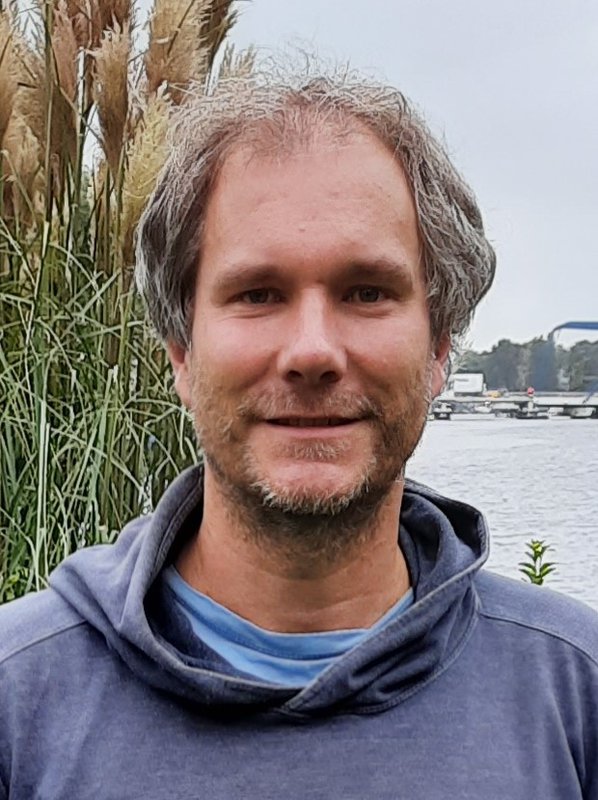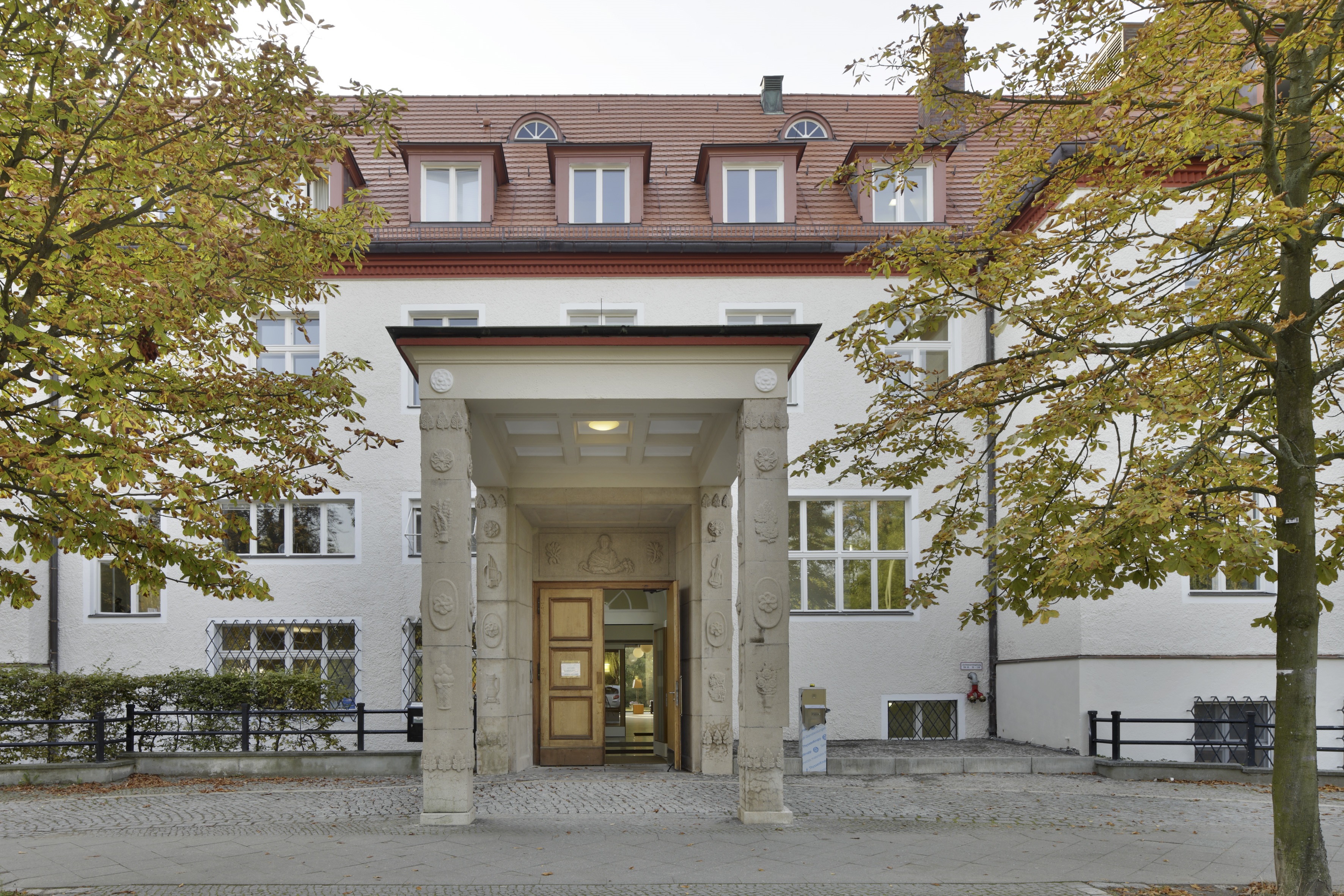Phase transitions in spatial particle systems
Workshop
Berlin, July 31 - August 2, 2023
Registration was open until May 14th.
This workshop is devoted to various types of phase transitions in various kinds of interacting spatial particle systems. Examples include condensation in randomly growing structures, percolation in randomly connecting models and gelation in random coagulation models, and also hard-sphere dynamics. We hope to discover relations and connections between these various phenomena, either in the effect, or in proof methods, or in the underlying philosophy or heuristics.
- 2 Minicourses on Tuesday and Wednesday morning:
- Lorenzo Bertini, University of Rome 1
- Stefan Großkinsky, University of Augsburg
- Scientific Talks:
- Giada Basile, University of Rome 1
- Alessandra Bianchi, University of Padova
- Matthew Dickson, University of Munich
- Alexander Drewitz, University of Cologne
- Alexander Glazman, University of Innsbruck
- Andreas Goebel, Hasso Plattner Institut Potsdam
- Tejas Iyer, Weierstrass Institute Berlin
- Benjamin Lees, University of Bristol
Unfortunately, Lorenzo Taggi had to cancel his participation.
The Conference Dinner will take place on Tuesday evening at the Harnack-Haus.
Minicourses
Preliminary schedule
Monday
13:00-13:45 Registration
13:45-13:50 Welcome Address
13:50-14:40 Alexander Drewitz
14:40-15:30 Benjamin Lees
15:30-16:00 Coffee Break
16:00-16:50 Andreas Goebel
16:50-17:40 Alessandra Bianchi
Tuesday
9:00-10:30 Minicourse I: Lorenzo Bertini
10:30-11:00 Coffee Break
11:00-12:30 Minicourse II: Stefan Großkinsky
12:30-13:50 Lunch Break
13:50-14:40 Giada Basile
14:40-15:30 Alexander Glazman
15:30-16:00 Coffee Break
16:00-16:50 Matthew Dickson
16:50-17:40 Tejas Iyer
18:30-20:30 Conference Dinner
Wednesday
9:00-10:30 Minicourse I: Lorenzo Bertini
10:30-11:00 Coffee Break
11:00-12:30 Minicourse II: Stefan Großkinsky
12:30-13:30 Lunch Snack
Titles and Abstracts
Stefan Großkinsky: Condensation in interacting particle systems
talk slides
Condensation in IPS has been studied in probability and statistical mechanics for the past 20 years or so. While there exist continuous versions, we focus on models with a conserved quantity (called mass) which is discretized into individual particles moving on a regular lattice or a graph. These can represent actual mass or energy in physical applications, individuals in a biological population or vehicles in a traffic model. When the particle density exceeds a critical level, a condensing IPS separates into a bulk phase with a homogeneous distribution of mass, and a condensate where a non-zero mass fraction concentrates on a vanishing volume fraction. Classical examples which will be discussed in the lectures include zero-range and inclusion processes, and more general models of mass transport or exchange-driven growth. In the first lecture we will discuss results at stationarity in analogy to the classical theory of Gibbs measures and phase transitions. In the second lecture we address the dynamics of condensing IPS, for which there are various open problems.
extended abstract with references
Giada Basile: Asymptotic probability of energy non-conserving paths for binary collision stochastic models
talk slides
I will discuss large deviations for binary collision stochastic models. The paradigmatic model is the Kac’s walk, described, in the kinetic limit, by the homogeneous Boltzmann equation. I will exhibit some atypical paths that violate energy conservation, such that condensation-like phenomena occur. This is a joint project with L. Bertini, D. Benedetto, E. Caglioti and S. Marchesani.
Alessandra Bianchi: Random walks on a Lévy-type random media
talk slides
We consider a one-dimensional process in random media that generalizes the model known in the physical literature as Lévy--Lorentz gas.
The medium is provided by a renewal point process in which the inter-distances between points are i.i.d. heavy-tailed random variables, while the dynamics is obtained as the linear interpolation of -- possibly long jump -- random walks on the point process. These models have been used to describe phenomena that exhibit superdiffusion, and the main focus of this investigation is on the derivation of the scaling behavior of the process as a function of the parameters that enter its definition.
We give an account on a number of recent theorems, which include non-standard functional limit theorems for the process in discrete and continuous time, and the distributional characterization of the first-passage time. We conclude by discussing possible future directions and some open problems.
Matthew Dickson: Critical Exponents for Marked Random Connection Models
talk slides
Marked random connection models (RCMs) are random graph models that include both geometric behaviour from giving vertices a random spatial coordinate (in $d$-dimensional Euclidean space), and heterogeneity from giving the vertices a `mark' coordinate in some probability space. Edges then form between each pair of vertices independently with a probability depending on the spatial and mark coordinates of the two vertices. Such models exhibit a percolation phase transition, and here we prove that under the assumption of a triangle condition some critical exponents take on their predicted mean-field values. Furthermore we show that many models will satisfy this triangle condition in sufficiently high spatial dimensions. This is based on joint work with Alejandro Caicedo and Markus Heydenreich.
Alexander Drewitz: (Near-)critical percolation with long-range correlations on transient graphs
talk slides
Percolation models have been playing a fundamental role in statistical physics for several decades by now. They had initially been investigated in the gelation of polymers during the 1940s by chemistry Nobel laureate Flory and Stockmayer. From a mathematical point of view, the birth of percolation theory was the introduction of Bernoulli percolation by Broadbent and Hammersley in 1957, motivated by research on gas masks for coal miners. One of the key features of this model is the inherent stochastic independence which simplifies its investigation, and which has lead to deep mathematical results. During recent years, the investigation of the more realistic and at the same time more complex situation of percolation models with long-range correlations has attracted significant attention.
We will exhibit some recent progress for the Gaussian free field with a particular focus on the understanding of the critical parameters in the associated percolation models. What is more, we also survey recent progress in the understanding of the model at criticality via its critical exponents as well as the universality in the local geometry of the underlying graph.
Alexander Glazman: Delocalisation of height functions
talk slides
Take a simple random walk in dimension 1 that starts at 0, makes 2N steps and ends at 0. It is elementary that the variance of the position of the walk at time N is of order square root of 2N.
We will discuss a version of this question with a two-dimensional time: delocalisation of integer-valued height functions on planar lattices. The main example will be the six-vertex model when a,b \leq c \leq a+b. Our approach applies also to Lipschitz functions (loop O(2) model): we show delocalisation when 1/2 \leq x^2 \leq 1. The main idea behind the argument is a novel positive association (FKG) property for a joint distribution of spin and percolation configurations. It enables the use of the non-coexistence theorem of Zhang and Sheffield. If time permits, we will also discuss how to derive from this a new proof for the continuity of the phase transition in the random-cluster model.
In the delocalised regime, the height functions are expected to converge to the Gaussian free field. This is so far known only at the line a^2 + b^2 = c^2 (dimer model) and in its neighbourhood.
Based on a joint work with Piet Lammers.
Andreas Goebel: Computational phase transitions and the hard-core model
talk slides
The hard-core model was introduced in statistical physics as a lattice model of a hard-gas. Outside of statistical physics, it has been independently studied in combinatorics under the name of independence polynomial, in queueing theory as a loss network and in computer science as the problem of counting independent sets. We define the hard-core model on any graph G as a probability distribution over the independent sets of G, i.e. subsets of its vertex set where no two vertices are adjacent. To each independent set S, we assign probability proportional λ^|S|, where λ is the fugacity parameter. The normalising factor of these probabilities is the partition function. Since the 90's there has been a plethora of work studying the computational properties of the hard-core model, that is when can we efficiently approximate its partition function with a polynomial-time algorithm and when we cannot. This body of work resulted in clean phase transitions with respect to the fugacity-regime. In this talk we will survey these results. To this end we will introduce the tools used and how they connect to other types of phase transitions that this model undergoes.
Tejas Iyer: Gelation in cluster coagulation processes
talk slides
In the cluster coagulation model introduced by Norris [Comm. Math. Phys., 209(2):407-435 (2000)], clusters take values in a measure space E, and merge to form a new particle z according to a transition kernel K(x,y, d z). This model is general enough to incorporate various inhomogenieties in the evolution of clusters, for example, their shape, or their location in space. A question of general interest in this area is whether or not `gelation' occurs, which generally refers to the question of whether or not, as some time t > 0, `macroscopic' (large) clusters make up a positive proportion of the mass of the system. We discuss general, sufficient criteria for gelation in this model and criteria for trajectories associated with this process to concentrate among solutions of a infinite system of measure valued differential equations, which generalise the Flory equation. As particular cases, we extend results related to the classical Marcus-Lushnikov coagulation process, showing that, for example, reasonable homogenous coagulation processes with exponent \gamma > 1 yield gelation. Finally, we use coupling arguments with inhomogeneous random graphs to deduce sufficient criterion for a `strong gelation' effect to occur (the emergence of a particle of size O(N)).
Benjamin Lees: Different types of percolation for models of interacting cycles and loops on a graph
talk slides
Representations of quantum systems in terms of random geometric objects have provided fascinating insights into these important and difficult models, starting with the representation of the Heisenberg ferromagnet in terms of random stirrings/random transpositions. This motivates the following question for permutations built from randomly placed transpositions of neighbours in a graph: what is the relation between the event that a macroscopic connected component of edges have had at least one transposition of their end points (edge percolation) and the event that a macroscopic cycle exists in the resulting transposition (cycle percolation)? Clearly the first event is contained in the second, but do they actually coincide? For the complete graph the remarkable result of Schramm shows that they do coincide. For regular trees they do not, and we can even find the critical intensity of the transpositions. What about cases in between? We will look at recent results and also at the case of classical systems and see how it is, somewhat bizarrely, more difficult.
Audience
Participants
- Luisa Andreis
- Giada Basile
- Lorenzo Bertini
- Alessandra Bianchi
- Alejandro Caicedo
- Matthew Dickson
- Alexander Drewitz
- Alexander Glazman
- Andreas Goebel
- Stefan Großkinsky
- Markus Heydenreich
- Tejas Iyer
- Julian Kern
- Andreas Klippel
- Wolfgang König
- Jonas Köppl
- Chun Yin Lam
- Heide Langhammer
- Benjamin Lees
- Min Liu
- Lukas Lüchtrath
- Elena Magnanini
- Marcus Pappik
- Silke Prohl
- Alexandra Quitmann
- André Schlichting
- Martin Slowik
- András Tóbiás
- Vesselin Tonchev
- Anh Duc Vu
- Weile Weng
- César Zarco Romero
- Alexander Zass
The venue of the Workshop is the Harnack-Haus at Ihnestraße 16-20, 14195 Berlin-Dahlem.
It is close to the U-Bahn station Freie Universität (Thielplatz), on the U3 line.
Most of the event will take place in the Meitner-Hörsaal.For having lunch on Monday before the workshop, we inform you that the Harnack-Haus offers participation in a lunch buffet for 41,60 Euros per person (including drinks), which is not included in the participation of the workshop. There are a couple of kiosks, cafes and restaurants within walking distance of the Harnack-Haus.
The organisers have reserved hotel rooms at the Harnack-Haus. During the registration process, you will be able to request us to book a room for you. Self-organized housing is possible, and members of SPP2265 will be reimbursed if the hotel price stays within reasonable bounds (e.g., below 100 Euros per night).
If you have any questions, please do not hesitate to
Homepage of the SPP2265.


